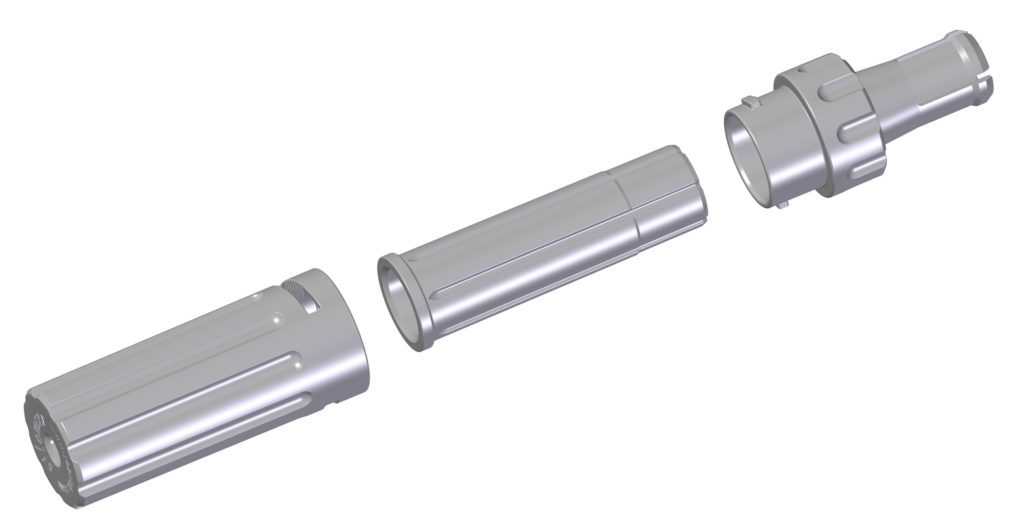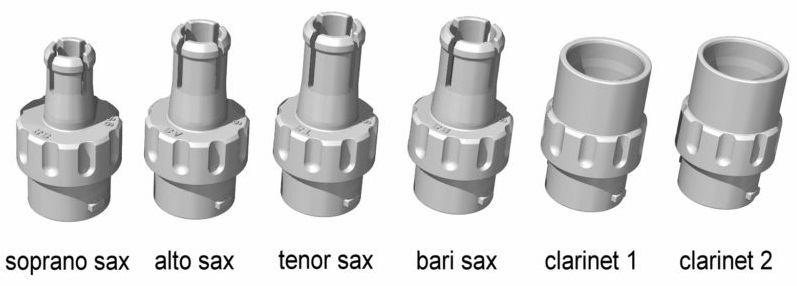JazzLab Sax Silencer – Info & Exercises
19th February 2020The saxophone and clarinet, aside from the instrument, use a setup comprised of the mouthpiece, reed and ligature. The ligature secures the reed to the mouthpiece in such a way that leaves about half of the reed’s length free to vibrate. When the mouth forms a seal around the reed an mouthpiece and air is passed through, the reed vibrates. These vibrations push air down the instrument – this is how our sound is made.
Solid breath and embouchure control is the foundation block of any wind player. Read on to see how to take advantage of just your mouthpiece setup to build your technique and stamina – and how to do so anywhere with the JazzLab Silencer!

JazzLab Silencer
For one reason or another, we can’t always practice our instrument properly. Maybe you’re restricted by time, or you’re in a space which requires you to be conscious of noise levels. Whatever the case, you can still do your mouthpiece exercises (without annoying the neighbors!) with a JazzLab Silencer.
The JazzLab Silencer comes with adaptors for soprano to baritone saxophones, as well as two Bb clarinet adaptors for mouthpieces with different tenon diameters. The adaptor fixes to the insert and housing. Together, the three parts reduce the volume of the mouthpiece by 14 to 20 decibels. So you can focus on your exercises without fear of being disruptive!
Such a device is particularly useful when you’re living in, for example, a flat. Neighbors above, below, and to either side probably would not appreciate the crowing of a mouthpiece!

The components are constructed of a high quality plastic composite, making it easy to handle and clean. The Silencer works best when cleaned after each use, and can be decalcified simply by resting in a glass of vinegar before being rinsed with water. Each pack comes with the housing, insert, six adaptors, and a booklet and CD of instructions and pointers.
Lets Talk About Pitch
When blowing on the mouthpiece and reed alone, with no barrel or crook attached, your mouthpieces should sound roughly at the following pitches…
- Soprano Saxophone – D
- Alto Saxophone – A
- Tenor Saxophone – G
- Baritone Saxophone – F
- Bb Clarinet – B or Bb
All of the above are in reference to concert pitch, so make sure your tuner is set right! This is also only a rough guide – different factors may change the pitch, such as the mouthpiece bore size, chamber length, and even the player’s physiology.
So don’t worry if you don’t get the ‘right note’ directly in tune – just aim for a solid, consistent tone on one pitch. Try to keep the tone straight,with no vibrato or dips in pitch.
Exercises
Once you’re certain of your pitch, you can begin to play with it!
On the same pitch that you found as your ‘home’ mouthpiece tone, have a go at…
- Long tones with and without vibrato
- Changing dynamics with gradual dimminuendo and crescendo
- Extremes of dynamic, from pianissimo to fortissimo
- Playing with articulation
- Tonguing different rhythms
Or indeed anything else you can think of that works on a single pitch.
Pitch Control
Exploring pitch control on the mouthpiece helps improve tonal flexibility, as well as developing aural skills.
Try to change the pitch of your mouthpiece note. You’ll find yourself ‘lipping’ the note, as well as changing your tongue position. See just how far above and below your original note you can go. Eventually, you’ll feel comfortable performing a glissando between these two extremes.
Once you’re sure of your range on the mouthpiece, you can have a go at scales. Try not to have bends in between each note of the scale – tongue the notes cleanly, as if you were playing scales on your instrument. Play a major scale from your lowest note to the highest, and then back down.
If you feel confident, mix up the scales! Try minor and chromatic scales, or maybe even diminished scales and arpeggios. Also try the scales using different articulations and dynamics – everything you would be doing with your regular scale practice!

Jesse – Woodwind Specialist
If you have any questions about any of our products or services, feel free to send us a message or call on 01628 630800. Our staff are happy to help with anything woodwind and brass!